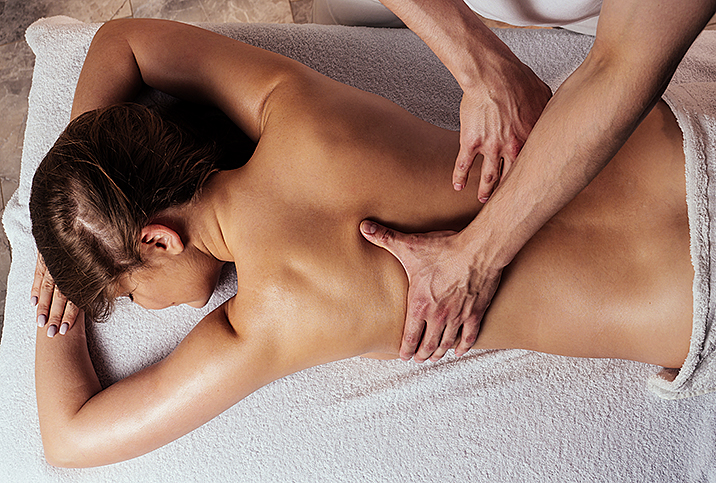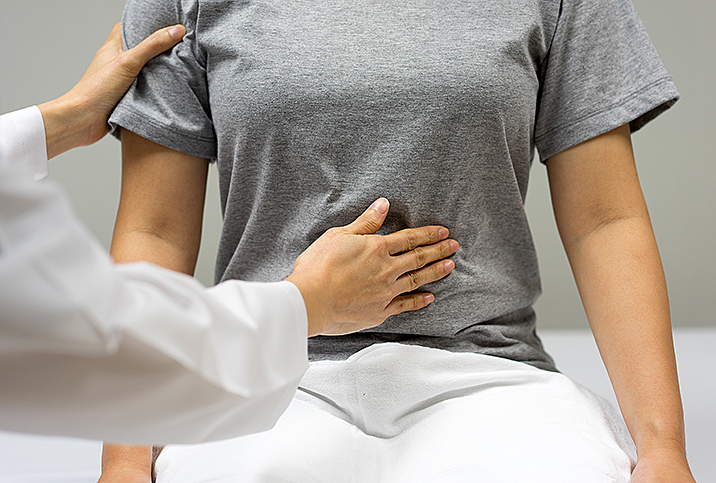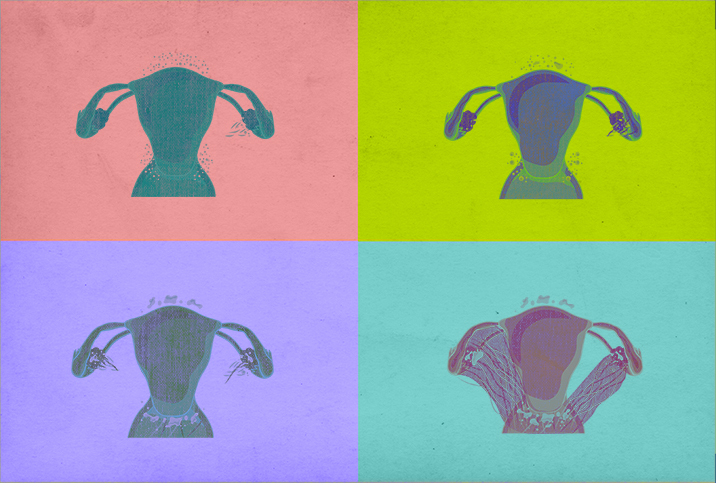5 Ways I Manage My Endometriosis Pain

About five years ago, one of my colleagues found me burrowed under my desk with my laptop after I abruptly left a conference call.
"What's wrong?" she asked, terrified to see me working while curled up in a fetal position, rocking back and forth. Wincing through the pain, I told her it was just my period.
Her mind was blown.
That's when I realized the pain I was experiencing during my cycle was not typical. A few visits with my OB-GYN all but confirmed I had inherited the same disease that plagued my mother: endometriosis.
What is endometriosis?
If you're not familiar with the term, endometriosis is a condition where the tissue that normally lines your uterus, the endometrium, grows outside your uterus. The condition usually impacts your pelvic or abdominal region, and the most common symptoms are painful menstruation, pain during or after sex, lower back pain, stomach cramping and spotting in between periods.
I've never received an official endometriosis diagnosis, which involves going under the knife to have the endometrial tissue scraped off. However, my doctor and I opted out of laparoscopic surgery because we didn't think it would actually help me. Even if it did, the endometriosis could flare up again the following month.
Pain medication works for some women, but I'm extremely sensitive to pain pills and can't keep them down. While I still brace myself for the worst once a month, five approaches have helped reduce my pain the past few years.
1. Ice instead of heat
Heating pads work wonders for period pain and can sometimes lessen the symptoms of endometriosis. While heat offers pain management for me, it's not as effective as I'd like. Ice, on the other hand, relaxes my painful cramping. It can take up to 30 minutes for the effects to kick in, but it has helped lull me back to sleep after I woke up with crippling pains.
2. Massage
I've heard professional targeted massages can do wonders for endometriosis pain, but not everyone can afford it. Personally, I've found massaging my lower stomach and pelvic area can help reduce pain when I'm having a particularly bad flare-up. If I'm not able to coordinate this maneuver on my own, my partner helps massage any inflamed areas.
Everyone's body is different. While deep massages help me, you might need a more gentle approach. I recommend trying this on yourself during your next cycle to see what type of massage is most helpful for you.
3. Stop birth control pills
I was first diagnosed with endometriosis when I turned 30, about a decade after my pain began. At that point, I had been on birth control pills since I was 13 and kept hearing they were likely reducing my endo pain. Even so, I suspected the pill was impacting my mental health and causing migraines and mild vision problems, so I stopped taking it.
Since coming off birth control, my endometriosis symptoms have greatly improved. Instead of suffering for a full week, the worst of my symptoms disappear within 24 to 48 hours, and I have cycles where pain is minimal. Again, everyone is different, but in my case, it seems birth control exacerbated my endo symptoms.
4. Turmeric capsules
When I went off birth control, I experienced the unwanted side effect of adult acne. I started taking turmeric capsules to reduce inflammation and calm my acne. I'm not sure if the turmeric was responsible for healing my face, but it seemed to calm my endometriosis. That makes sense because turmeric contains curcumin, a natural anti-inflammatory, and endometriosis is an inflammatory condition. I order turmeric capsules online, but you can also add turmeric, a spice, to your meals.
5. Accept the pain
Sometimes, there's nothing you can do to alleviate the pain except wait for it to end. I'm fortunate enough that my endometriosis pain has never caused me to pass out or visit the emergency room, but I know some women have it worse than I do.
If these methods aren't working or the pain is too intense, I let myself ride it out, cry and tense up as needed to fight the pain. Doing this allows me to release pent-up frustration and eventually relax after an hour or two.
A problem shared
Living with endometriosis can be frustrating and downright debilitating. It's disheartening to think of how little we know about this condition and how few treatments exist. Aside from having multiple laparoscopies or a full hysterectomy—neither has been shown to relieve symptoms for all impacted women—the medical world doesn't have great management solutions for this condition.
The good news is, as more women are becoming aware of endometriosis and sharing their stories, more alternative methods of pain reduction are being explored. While I hope science uncovers a solution soon, I'm grateful for the many women who have begun sharing options for managing this severe pain.


















